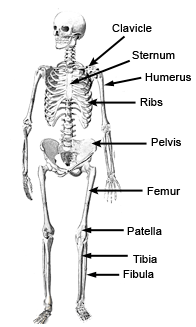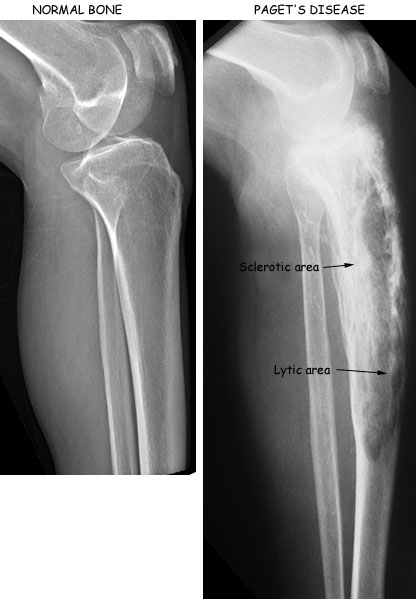Pagets Disease Information
Click here to scroll to the list of available medications ↓
Paget’s disease is also known as osteitis deformans. Paget’s disease is defined as a metabolic bone disease where the bones are destroyed and then experience re-growth, creating abnormalities. In Europe, Australia, and New Zealand as much as 5% of the elderly population is diagnosed with Paget’s disease. There is speculation as to why there is a higher intensity in these regions without any actual evidence or reasonable explanation.
While most patients have no symptoms, those that do experience symptoms may find themselves experiencing joint stiffness, bone pain, joint pain, headaches, bowing of the legs, warmth of the affected bone, neck pain, a reduction in measured height, fracture, hearing loss, or the obvious deformity of the bone.
The actual cause of Paget’s disease is not known, although there is speculation and even some evidence of possible causes such as early viral infection or possibly genetic causes. Once there has been destruction of the bone, new bone forms, which is larger than the original bone and is filled with blood vessels. This phenomenon has baffled scientists for years and they have yet to determine a causative factor.

Risk factors may be regional, considering the high incidents of Paget’s disease in Europe, Australia, and New Zealand, although Paget’s disease does occur in smaller percentages all over the world. The disease itself causes excessive breakdown of bone tissues, and thus anything that may affect the bone density may also affect the severity of Paget’s disease but might not necessarily contribute to the cause of the disease. The disease is more often localized, affecting only one part of the body which usually the hip, pelvis, leg, arm, spine, or collarbone.
Diagnosing Paget’s disease often requires an x-ray to determine bone density and areas of re-growth, a bone scan, elevated serum alkaline phosphatase test, and tests for elevated markers of bone breakdown. Patients with Paget’s disease may also come back with abnormal results for tests which include serum calcium and ALP isoenzyme.
Treatment options include drug therapies which are designed to target the bone’s breakdown rates, usually biophosphonates. Biophosphonates include etidronate, alendronate, pamidronate, tiludronate, and risedronate. Other medications may be effective for those who can not tolerate biophosphonates. Localized Paget’s disease that is not active and is not showing evidence of symptoms may not require any kind of treatment.

While Paget’s disease typically strikes the elderly, a small percentage of younger individuals are stricken with the disease every year. This can cause hazards when it comes to working, as well as other daily activities. The bone that is broken apart is replaced with bone that is weaker, which increases the likelihood for breakage. Deformity can lead to great difficulties later in life or as the disease progresses.
The elderly should contact a health care provider if they even suspect they are developing Paget’s disease, as early treatment may spare them fractures, including those which can lead to complications or early death.
When Paget’s disease affects the skull, deformities of the skull can interfere with both brain function and hearing. People who develop Paget’s disease of the skull will most likely require long term care as well as physical therapy as their mobility may be affected, depending on the pressure that is applied to the brain as deformities develop.
Rarely, but on some occasions, Paget’s disease may only show one incident. In this case, treatment is not necessary. While it is possible to develop the disease, it is also possible for the disease to become dormant in the system. While there is speculation as to why this may or may not occur, there is no distinctive reason for why some people develop the active disease and others end up being asymptomatic.